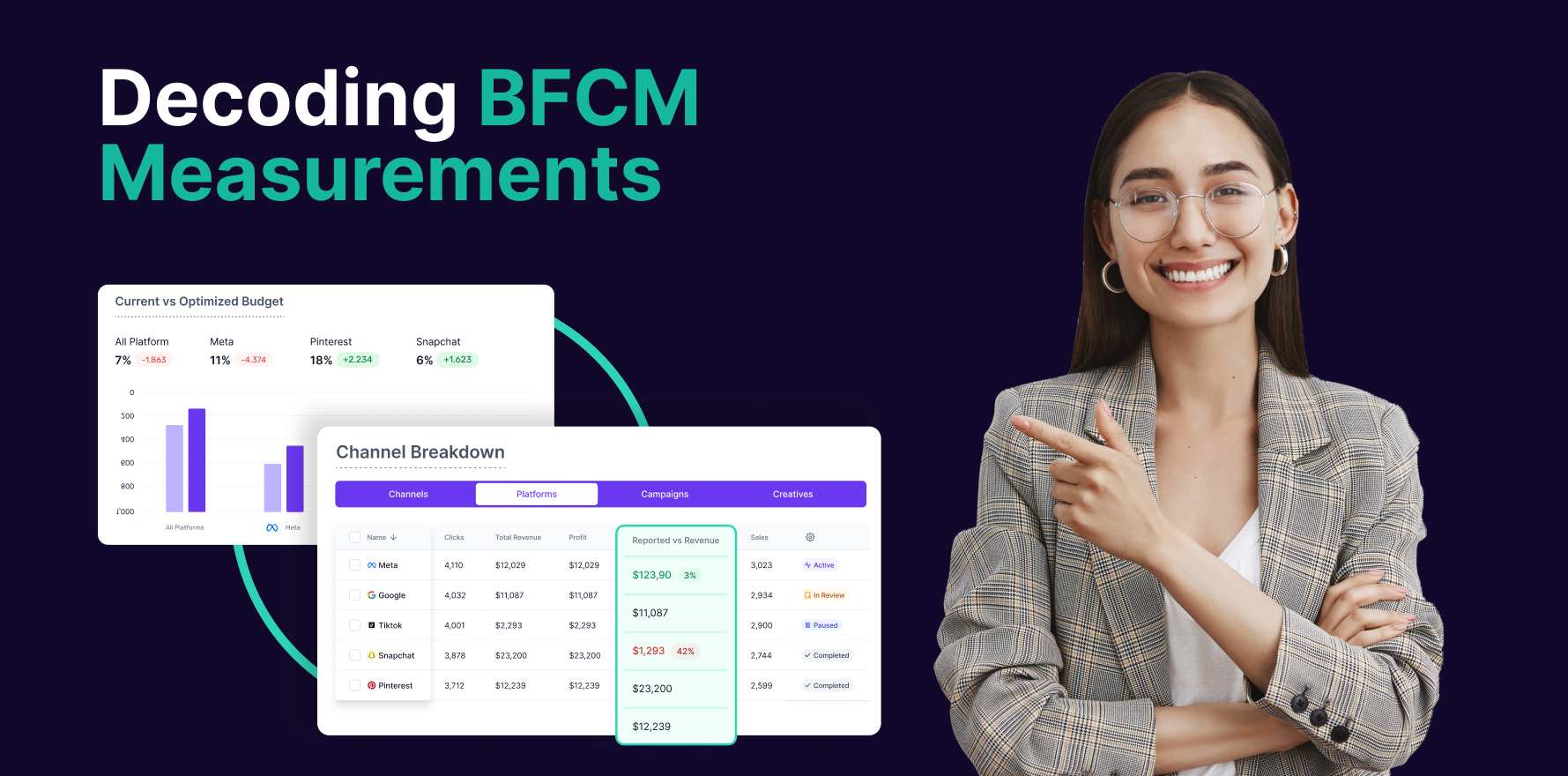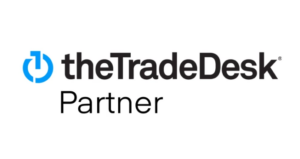As businesses strive to maximize the impact of their marketing efforts, understanding what works and what doesn’t becomes crucial. A Marketing Measurement Framework offers a structured approach to evaluating the effectiveness of marketing campaigns and their contribution to business outcomes.
By combining various measurement approaches like Marketing Mix Modeling (MMM), Incrementality Testing, and Attribution Models, this framework empowers marketers to make more informed decisions, optimize budgets, and prove the ROI of their efforts.
This guide will provide an overview of why having a comprehensive marketing measurement framework is essential for businesses of all sizes. It will delve into the different types of frameworks available and how they can help you gain a deeper understanding of your marketing performance across multiple channels.
Whether you’re looking to improve campaign effectiveness or allocate budget more efficiently, a solid marketing measurement framework is the key to achieving long-term marketing success.
What is Marketing Measurement Framework?
A marketing measurement framework is a set of structured approaches that integrate different measurement methods, such as MMM, Incrementality Testing, and Causal Attribution, to help marketing teams assess the effectiveness of their campaigns and the impact of their efforts across channels.
This framework helps businesses move beyond traditional measurement methodologies, siloed tools, and biased reports. It ultimately enables marketers to eliminate wasted ad spend, guesswork, and inefficiencies in budget allocation, scenario planning, and forecasting, thereby proving marketing ROI.
Who Should Have an Advanced Marketing Measurement Framework?
Any medium-sized business and enterprises who spent millions of dollars in their marketing efforts and campaigns needs to have an advanced marketing measurement framework.
Why Do Businesses Need an Advanced Marketing Measurement Framework?
Businesses need an advanced marketing measurement framework to understand the truth of marketing efforts that drive business outcomes, moving beyond flawed platform-reported metrics.
Here’s the list of advantages, why businesses should have an advanced marketing measurement framework
1. Unified Reporting
To start, businesses need a unified reporting system that consolidates data across all platforms and channels. This creates a single source of truth and ensures consistency in decision-making. Without this, businesses might be working with conflicting or incomplete data from different marketing channels.
2. Move Beyond Traditional Platforms
With unified reporting in place, businesses can move beyond traditional platforms like Google Ads or Facebook. These platforms often focus on their own metrics, which can sometimes be misleading. Relying only on these would limit a business’s understanding of the overall performance. By integrating data across various sources, a more holistic view of marketing performance is obtained.
3. Fixes Attribution Complexities
As businesses move beyond traditional metrics, the next challenge to tackle is attribution complexities. Marketing efforts interact in intricate ways across various channels, making it difficult to determine the exact contribution of each campaign or effort. By using advanced frameworks like incrementality testing and causal attribution, businesses can resolve these complexities and accurately assign value to their marketing campaigns. These frameworks enable businesses to understand the true cause-and-effect relationships between marketing activities and business outcomes, providing clarity on what drives results and optimizing future strategies.
4. Cross-Channel Measurement
Once attribution issues are resolved, businesses can implement cross-channel measurement. This enables them to track performance across all online and offline channels, ensuring no part of the marketing strategy is overlooked. It also helps uncover how different channels work together to drive business outcomes.
5. Full Funnel Measurement
With the ability to measure cross-channel performance, it becomes essential to measure the full funnel from awareness to consideration to conversion.
Businesses can now understand the entire customer journey and optimize efforts at every stage of the funnel, ensuring a comprehensive approach to marketing performance.
6. Identifies Precise Channel Contribution
With full funnel measurement, businesses can pinpoint which channels and efforts truly drive business outcomes.
By identifying the highest-performing areas, businesses can focus on scaling and investing more in efforts that yield the best results, such as increased sales or lead generation.
7. Identify Saturated Channels Proactively
At the same time, an advanced framework also reveals which channels and efforts are not working.
By isolating ineffective strategies, businesses can avoid wasting resources on underperforming channels, allowing them to reallocate budgets to more promising efforts.
8. Effective Budget Allocation
Armed with insights into what works and what doesn’t, businesses can now make informed decisions about effective budget allocation. They can direct their marketing spend to the areas that provide the best ROI, ensuring more efficient use of resources.
9. Effective Scenario Planning and Forecasting
Finally, with a well-established measurement framework in place, businesses are in a strong position to engage in effective scenario planning and forecasting. By running different scenarios, they can predict potential outcomes, adjust strategies, and prepare for future shifts in the market, ensuring they stay ahead of the curve.
Types of Marketing Measurement Framework
1. Modeling Framework
The Modeling Framework focuses on using statistical and mathematical models to analyze the effectiveness of marketing efforts. By examining historical data, businesses can uncover patterns and relationships between marketing activities and their outcomes, such as sales or customer behavior.
This approach allows companies to simulate how changes in their marketing mix, such as shifts in advertising spend or changes in promotional strategies, will affect future performance.
One of the key benefits of this framework is that it provides a comprehensive, data-driven analysis, helping businesses allocate resources more efficiently and make informed decisions about where to invest.
1.1 Marketing Mix Modeling (MMM)
Marketing Mix Modeling (MMM) is a powerful technique within the modeling framework that helps businesses assess the impact of various marketing channels on overall sales or key business objectives.
By analyzing data across multiple channels, such as TV, digital ads, Connected TV and influencer Marketing Activities. MMM uses statistical models to quantify how different elements of the marketing mix, like product price, promotion strategies, and media spend, contribute to the business’s performance.
This method is highly valuable for companies seeking to optimize their marketing budget allocation and gain insight into which marketing efforts are providing the highest return on investment (ROI).
2. Experimentation Framework
The Experimentation Framework involves conducting controlled experiments to measure the effectiveness of different marketing tactics and strategies. It focuses on isolating variables and testing specific hypotheses to determine how marketing activities influence customer behavior and business outcomes.
The major advantage of this framework is that it enables businesses to directly measure the causal impact of their marketing efforts, providing more reliable insights for decision-making.
2.1 Incrementality Testing
Incrementality Testing is a key technique within the experimentation framework that isolates the true effect of marketing activities by comparing the outcomes of exposed versus unexposed groups. For instance, businesses may target one group with a marketing campaign and leave another group untouched to determine whether the campaign caused an increase in sales or other desired outcomes.
This type of testing allows businesses to measure the incremental lift generated by specific marketing efforts, offering a clear view of the direct impact on conversions and helping avoid over-attribution to external factors.
Two common approaches to incrementality testing include:
- Geo-Experiments: Marketing campaigns are run in specific geographic regions while others are left unexposed. By comparing performance between regions, businesses can assess the true impact of marketing activities while accounting for natural variations across markets.
- Time-Based Analysis: Marketing efforts are tested by comparing performance during campaign periods against baseline periods without activity. This approach helps businesses isolate the temporal impact of marketing interventions and identify whether observed changes are truly driven by the campaign or by seasonality and external trends.
3. Attribution Framework
The Attribution Framework is focused on assigning credit to the various touchpoints a customer interacts with during their journey toward conversion. Rather than just attributing success to a single marketing activity, this framework helps businesses understand how different channels, such as social media, search, and email, contribute to the final conversion. Attribution models can range from simple last-click attribution, which gives all credit to the final touchpoint, to more complex models that distribute credit across multiple interactions. The goal is to provide a more accurate understanding of which channels and strategies are driving the most value.
3.1 Platform Attribution
Platform Attribution assigns credit for conversions to individual marketing platforms, such as Google Ads, Facebook Ads, or Instagram. It tracks user interactions within each platform and determines which ads or actions directly led to a conversion. While this method provides valuable insights into how specific platforms contribute to performance, it is often limited by its siloed focus, as it doesn’t take into account cross-platform interactions or the broader customer journey. Businesses may use platform attribution to evaluate the effectiveness of their spend on each individual platform, but it doesn’t provide a holistic view of the entire marketing ecosystem.
3.2 Multi-Touch Attribution
Multi-Touch Attribution (MTA) goes beyond single-touch attribution models by assigning value to all of the touchpoints a customer encounters along their journey, such as social media ads, email campaigns, or website visits. This model ensures a more comprehensive understanding of how various interactions collectively contribute to conversions. By giving partial credit to each touchpoint based on its role in driving the customer toward conversion, MTA helps businesses optimize their marketing strategies and allocate resources more effectively across different channels. However, it still may not provide a clear cause-and-effect relationship between actions and outcomes.
3.3 Causal Attribution
Causal Attribution is a more advanced form of attribution that seeks to establish a cause-and-effect relationship between marketing activities and business outcomes. Unlike correlation-based attribution models, which focus on associating touchpoints with conversions, causal attribution uses statistical techniques to measure the direct impact of each marketing activity on the desired result. This method aims to eliminate biases and external influences, offering a clearer, more reliable view of the true effect of marketing efforts. By understanding the precise impact of each marketing action, businesses can optimize their strategies with greater confidence and accuracy.
Introducing Unified Marketing Measurement Framework
The Unified Marketing Measurement Framework is an integrated approach that consolidates various marketing measurement techniques into a single cohesive system. By merging multiple tools such as Marketing Mix Modeling (MMM), Incrementality Testing, and Attribution Models, this framework ensures that businesses have a comprehensive and accurate view of their marketing performance across all channels. It breaks down silos, connecting data from diverse platforms and touchpoints to provide a holistic perspective on marketing efforts.
This unified framework eliminates the limitations of isolated metrics and platform-specific reports, ensuring that businesses can evaluate the effectiveness of their campaigns more accurately. It aligns all marketing strategies with measurable outcomes, enabling better budget allocation, more informed decision-making, and improved ROI tracking. By creating a single source of truth for marketing data, the Unified Marketing Measurement Framework empowers businesses to optimize their marketing investments, streamline reporting, and develop strategies that truly drive business success.
Best Marketing Measurement Framework Your Business Should Have
Lifesight’s Unified Marketing Measurement Framework
Lifesight’s Unified Marketing Measurement Framework offers a comprehensive, data-driven solution for businesses looking to optimize their marketing efforts across multiple channels. By integrating different measurement techniques such as Marketing Mix Modeling (MMM), Incrementality Testing, and Attribution Models, Lifesight provides a holistic approach to understanding the effectiveness of your marketing campaigns.
This framework consolidates data from all platforms into a single, unified view, helping businesses break down silos and eliminate conflicting reports. With Lifesight’s solution, you gain the ability to measure and track key performance indicators (KPIs) across both online and offline touchpoints, giving you a full-funnel view of customer behavior. The result is more accurate insights, improved ROI, and optimized budget allocation.
Lifesight’s framework also empowers businesses to perform effective scenario planning, better forecast marketing outcomes, and allocate resources more efficiently. Whether you are looking to enhance customer engagement, improve campaign performance, or increase conversions, Lifesight’s Unified Marketing Measurement Framework ensures that your business makes data-driven decisions with clarity and confidence.
Conclusion
The Marketing Measurement Framework is a vital tool for businesses looking to optimize their marketing efforts and make data-driven decisions. By using advanced frameworks like Lifesight’s Unified Marketing Measurement Framework, businesses can break down silos, streamline reporting, and gain valuable insights into the effectiveness of their marketing strategies. Whether you’re looking to enhance ROI, improve budget allocation, or drive business growth, an advanced marketing measurement framework ensures that every marketing decision is backed by solid data and comprehensive analysis.
FAQ’s
1. How does a measurement framework differ from marketing attribution?
A measurement framework encompasses various methods, including attribution, to provide a holistic view of marketing performance. Attribution specifically focuses on crediting touchpoints in the customer journey, while a framework integrates multiple methods to evaluate the overall marketing impact.
2. How do I choose the right measurement model for my campaigns?
Choosing the right measurement model depends on your goals. MMM is best for understanding long-term efficiency and optimizing spend, with incrementality testing used to validate causal accuracy and recalibrate the model. Incrementality testing also helps measure the true lift of specific channels or tactics, while attribution models provide near real-time insights to optimize campaigns on the fly.
3. Can small businesses implement a marketing measurement framework?
Yes, small businesses can also benefit from a marketing measurement framework. There are tools and solutions tailored for smaller businesses that provide scalable and affordable ways to measure and optimize marketing performance.
4. How often should I review or update my framework?
Marketing measurement frameworks should be reviewed regularly, ideally on a quarterly or annual basis, to ensure they remain aligned with changing business goals, marketing strategies, and external market conditions.
5. What tools are useful for building a marketing measurement framework?
Tools like Google Analytics, Tableau, Adobe Analytics, Mixpanel, and specialized platforms like Lifesight offer powerful features for building and managing a comprehensive marketing measurement framework.
6. How do I align my framework with both brand and performance goals?
Aligning your framework with brand and performance goals requires a clear understanding of both short-term performance metrics (e.g., sales, leads) and long-term brand metrics (e.g., awareness, loyalty). Ensure that your framework integrates both, with a balanced focus on immediate ROI and long-term brand value.
7. How do I measure ROI within a marketing measurement framework?
ROI within a marketing measurement framework can be measured by comparing the cost of marketing activities to the revenue or value they generate. This requires clear tracking of both marketing costs and outcomes across all channels.
8. What challenges should I expect when setting up a framework?
Challenges may include data integration from multiple sources, selecting the right measurement models, and ensuring alignment with business goals. Businesses may also face technical limitations or resistance to change from internal teams.
9. Can a marketing measurement framework help with cross-channel analysis?
Yes, a well-designed framework enables cross-channel analysis by consolidating data from multiple touchpoints. This helps businesses understand how different marketing channels work together to drive conversions, enhancing the overall strategy.
Essential resources for your success



















































